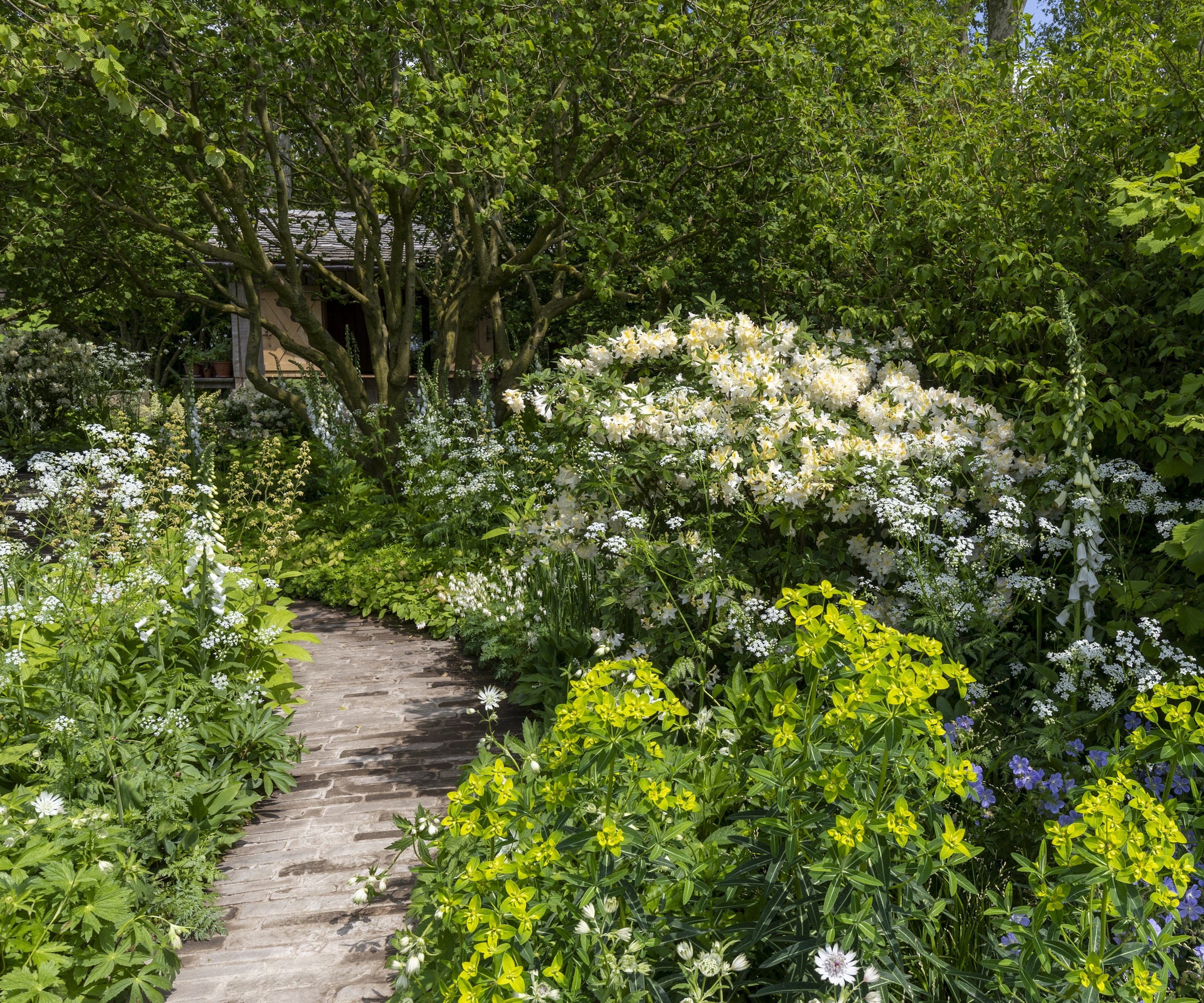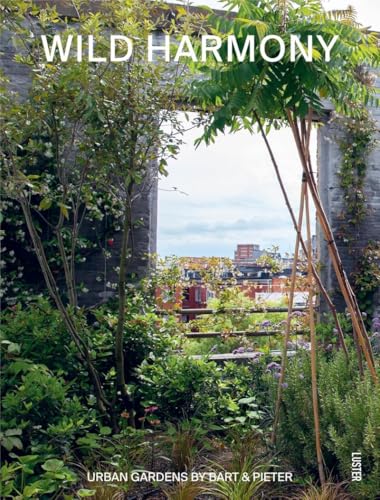Wild gardening is the standout trend for 2025 – an urban garden designer reveals the low-maintenance trick to perfecting the look
Known for their signature wild gardening style, design duo Bart Haverkamp and Pieter Croes take a low-maintenance approach to creating spectacular urban oases


Many gardeners feel pressure to keep their backyards looking prim and proper at all times. There's a never-ending list of things to prune, grass to mow, and flowers to thin out to ensure not a single leaf is out of place. But, have you considered what would happen if you just freed yourself of this obligation?
That's exactly the approach garden designers Bart Haverkamp and Pieter Croes favor when creating their signature wild urban gardens. The Belgium-based duo achieves the perfect wild gardening scheme by encouraging their clients to simply let go when crafting a wild garden and forget about the idea of things needing to look neat.
In their upcoming book, Wild Harmony (available to pre-order on Amazon), they showcase lush city garden spaces entirely transformed into something reminiscent of a natural environment, simply by allowing nature to do its thing.
With wild gardening being at the top of garden trends this year, I sat down with Pieter to discuss how exactly to achieve such a landscape in your backyard. His insights reveal it's less complicated than it seems and has a lot more to do with the mind than you might expect.
Wild gardening is achieved by letting go of control

'Being able to let things grow wild is a state of mind,' Pieter Croes tells me.
For many gardeners who have adopted formal garden approaches, there is a sense of garden guilt that arises from learning to let go when it comes to wild gardening. But, Pieter says it's all about coming to a realization that plants and nature have their own plans.
'As designer Vita Sackville-West encouraged, try to not prune your roses one year and see what happens,' he recommends. 'It's all about not wanting to control everything, just letting go, and only intervening when it becomes too much.'
Design expertise in your inbox – from inspiring decorating ideas and beautiful celebrity homes to practical gardening advice and shopping round-ups.
Of course, there are some instances where it would be a pruning mistake to leave a plant alone, such as if it is damaged or experiencing disease. As a general rule, though, wild gardens best come together when you allow plants to grow as they would in a native, unmaintained habitat.
'Let your space become a natural environment,' Pieter urges. As the image above shows, Bart and Pieter create this sense of natural habitat in urban gardens by selecting lush trees and shrubs and letting them become full and take over a space.
It's as simple as shifting your mindset to appreciate plants as living things that grow and evolve, rather than being purely decorative and needing to be controlled to maintain a clean look.
A bonus of leaving your plants be is you'll spot more wildlife, too. Before you know it, your yard might even turn into a bit of a wildlife garden and haven for pollinators, birds, and more. You can even try sprinkling these wildflower seeds for pollinators from Amazon to encourage more visitors.

Bart and Pieter are Belgian-based garden designers who have been working together for thirty years. Their focus is on urban gardens, rooftop terraces and small spaces. They are dedicated to sustainability and work considering climate change when designing new spaces. With over three decades of intuitive, organic practice, this duo has developed a signature style rooted in sustainability, spontaneity, and a deep respect for nature.
Only intervene when absolutely necessary

One misconception Bart and Pieter want to avoid is that letting your garden grow wild means never ticking off your spring gardening checklist and other important jobs throughout the year.
'This approach means minimal maintenance,' Pieter says. 'All you have to do is just take a walk around your garden and give some small attention to plants where it's needed,' he explains.
This means using essential pruning tools – like these bypass pruning shears from Amazon – to cut back plants where necessary, like if they're struggling from damage.
It's a soft approach that doesn't have a list of rules to follow. Instead, Pieter encourages using it as a moment of peace to observe your yard and make small tweaks to keep the space manageable.
The result will leave you with a garden bursting with life, full of thriving, happy plants growing unrestricted.

Wild Harmony highlights Bart and Pieterʼs signature style that lets nature take control of the space. It features over twenty of their recent projects, completed within the last decade, focusing primarily on urban gardens, rooftop spaces, terraces, and small plots highlighting what can be done with limited space and budget.
FAQs
Will my plants die if I don't prune them?
Plants will not necessarily die if they aren't pruned, but they could become weaker and face other issues. However, allowing plants to grow as they please without too frequent maintenance is a great way to achieve a wild garden in your yard.
Having said that, neglecting plants entirely would be a pruning mistake that can hinder their health. The best thing to do is research the requirements of the plants you're growing and strike a balance between doing the necessary jobs to keep them healthy and allowing them to thrive undisturbed.
One of the best things about rewilding is it can end up entirely unique. Whether you want a wildflower meadow or want to rewild your garden entirely, relinquishing control of your plants is the first step to take.
For more from Bart and Pieter, read our piece on the urban wild gardening trend they embrace.

Tenielle is a Gardens Content Editor at Homes & Gardens. She holds a qualification in MA Magazine Journalism and has over six years of journalistic experience. Before coming to Homes & Gardens, Tenielle was in the editorial department at the Royal Horticultural Society and worked on The Garden magazine. As our in-house houseplant expert, Tenielle writes on a range of solutions to houseplant problems, as well as other 'how to' guides, inspiring garden projects, and the latest gardening news. When she isn't writing, Tenielle can be found propagating her ever-growing collection of indoor plants, helping others overcome common houseplant pests and diseases, volunteering at a local gardening club, and attending gardening workshops, like a composting masterclass.
You must confirm your public display name before commenting
Please logout and then login again, you will then be prompted to enter your display name.